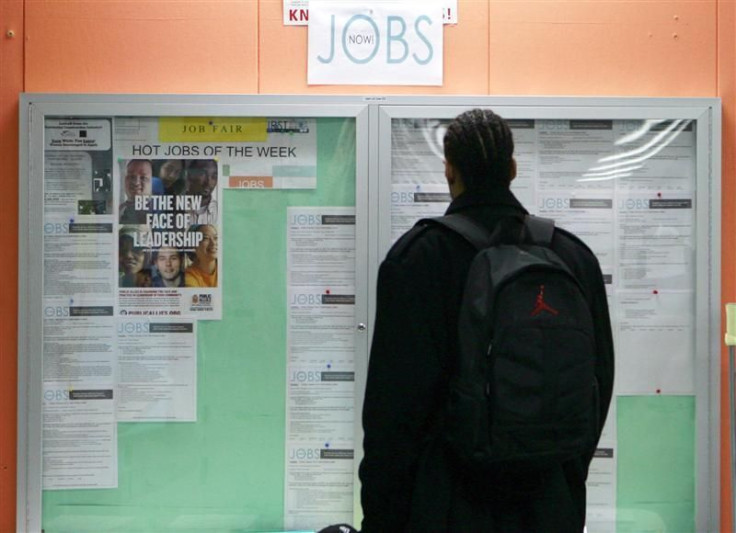US Jobless Claims Flat At 370,000 - Higher Than Expected

More Americans than expected filed for jobless benefits last week, echoing comments in the minutes of the April Federal Open Market Committee meeting that suggested policymakers feel unsure about the true state of the labor market.
In the week ended May 12, applications for unemployment insurance payments was unchanged from the previous week's upwardly revised figure of 370,000, according to data from the Labor Department that was issued on Thursday in Washington. That came in above market expectations for a 365,000 reading.
The four-week moving average, which normally provides a better indication of the underlying trend in labor markets than the weekly number of jobless claims, was 375,000, a decrease of 4,750 from the previous week's revised average of 379,750 for first-time benefit applicants.
The number of people filing for benefits after an initial week of aid increased by 18,000, to 3.27 million in the week ended May 5.
The continuing claims figure does not include the number of Americans receiving extended benefits under federal programs.
The four-week moving average for the week ended May 5 fell by 11,750, to 3.28 million, from the preceding week's revised average of 3.29 million.
Job gains are of great importance because they lead to income growth and that supports consumer spending, which accounts for more than 70 percent of the U.S. economy.
Nonfarm payrolls rose by 115,000 last month, the smallest gain since October 2011, while private-sector employers added 130,000 jobs, data from the Labor Department showed.
The unemployment rate, which is obtained from a separate household survey, dropped to 8.1 percent in April from 8.2 percent in March on declining labor-force participation.
FOMC
A decline in labor-force participation, which has been sharpest for younger workers, has been a factor in the nearly 1 percentage point decline in the unemployment rate since August, a drop that was larger than would have been predicted from the historical relationship between real GDP growth and changes in the unemployment rate.
Fed officials are unsure whether the changes in labor-force participation reflect cyclical factors that will be reversed once the recovery picks up.
Some members recalled that gains in employment strengthened in early 2010 and again in early 2011 only to diminish as those years progressed, minutes from the April 24 - 25 FOMC meeting released Wednesday said. Moreover, the uncertain effects of the unusually mild winter weather were cited as making it harder to discern the underlying trend in the economic data.
The central bank said it expects the unemployment rate will fall to 7.8 percent to 8.0 percent by the final three months of 2012.
U.S. stock futures recovered some early losses following the jobless claims data, but still remains in the red. The S&P 500 futures fell 2.4 points, to 1,320.00, while the Dow Jones Industrial Average futures gave up 6 points, to 12,568.00.
© Copyright IBTimes 2024. All rights reserved.












